“A journey around historic interiors”: this could have been the subtitle to the two-and-a-half days I spent in Amsterdam with my mother last week. The excuse for this trip was to see the current Vermeer exhibition at the Rijksmuseum but it ended up being so much more than just that. The days were both intense and calm, with lots of walking and visual stimulation, and I came home with a curious sensation of a clean, rather empty, brain, while at the same time I felt bursting with ideas and inspiration.
The fact that the sun was shining (how luck were we!), that there are virtually no cars in the city centre (such tranquility!) and that I only picked up my phone to take pictures and call home, all of it contributed to that “brain lightness” I felt when I landed in Bilbao (sadly, that feeling is long gone). But truly, what impressed me the most was the opportunity to see so many historic interiors in one fell swoop: in Vermeer’s paintings, done with extraordinary luminosity and sensitivity, in other paintings at the Rijksmuseum, and especially in the house museums we visited.
I’ve already told you about my love of house museums and Amsterdam has a large number of them (this book is a good guide). We only managed to see a few of them, I really want to go back for more! Here are my recommendations:
Museum Ons' Lieve Heer op Solder (Our Lord in the Attic): a 17th century canal house with a Catholic church in the attic. It’s outstanding. This house looks like it’s been frozen in time, I can’t really fathom how it’s been kept in its original form throughout the last 400 years, seeing that houses so often change hands and are remodelled. I think it’s the place with the most ambiance I’ve ever been to.
Rembrandt House: where Rembrandt lived and worked from 1639 to 1658. This house went through a lot of transformations over the centuries and it was turned into a museum in the early 1900s. Walking through its rooms feels almost like entering a painting by Pieter de Hooch or Vermeer. Unfortunately it was packed, which rather killed that illusion.
Het Grachtenhuis: some rooms decorated in the 18th century style, a lovely garden and a great interactive exhibition about the history and Amsterdam and its canals. Worth the visit.
Museu Van Loon: there’s an exhibition on at the moment that prevented us from seeing the usual house displays (it’s all covered up), which is a real shame, because the little I could see was remarkably beautiful. We did manage to see the kitchen (which I absolutely loved), the garden and the coach house. I really want to go back the next time I’m in Amsterdam.
Huis Willet-Holthuysen: a very opulent house with 19th century interiors. I especially liked its kitchen.
This abundance of interiors and of images of interiors makes me think that there’s a lot here that can be transferred and adapted to our own homes. Here are a few suggestions:
Woodwork painted in strong colours: beams, window casings, handrails, doors, cupboards… These are strong, unashamed shades but they have the softness of old pigments… they’re intense but never raucous.
Oriental rugs as table covers: apparently the reason the rugs were on tables and not on the floor was because they were eye-wateringly expensive, but there’s not doubt that, when you see them on a table, you can really appreciate all the colours and motifs. I was especially impressed with the way Vermeer painted the texture of the wool in this painting:
Blue and white ceramics: naturally, in Amsterdam, most of 17th century ceramics are Delftware but we can use pieces from other provenances. In these houses you can spot blue and white ceramics everywhere: tiles covering kitchen walls from floor to ceiling or as skirting boards, everyday objects like vases, plates, bowls…
Box-beds: nowadays these cocooned beds can be placed in alcoves, nooks and niches, protected by a nice set of curtains (you can see some examples here).
Walls covered in paintings: what we now call “gallery walls” or “salon style hanging” was already a thing in the 17th century. During that time in the Netherlands buying art was such a widespread activity that people from all walks of life had paintings on their walls… they even hung them in the kitchen!
Fabric-covered walls: the French are the real champions in this area but I enjoyed seeing this easy, ingenious ways of hanging fabric just by using loops and nails.
The architectural bones of these 17th century houses help a lot, of course — high ceilings, huge windows, beautiful floors covered in marble and terracotta mosaics — and that can be a bit harder to emulate in our own homes. These ideas I’ve just outlined, however, are a lot easier to translate into current interiors. I hope you like them.
Until next time,
Constança




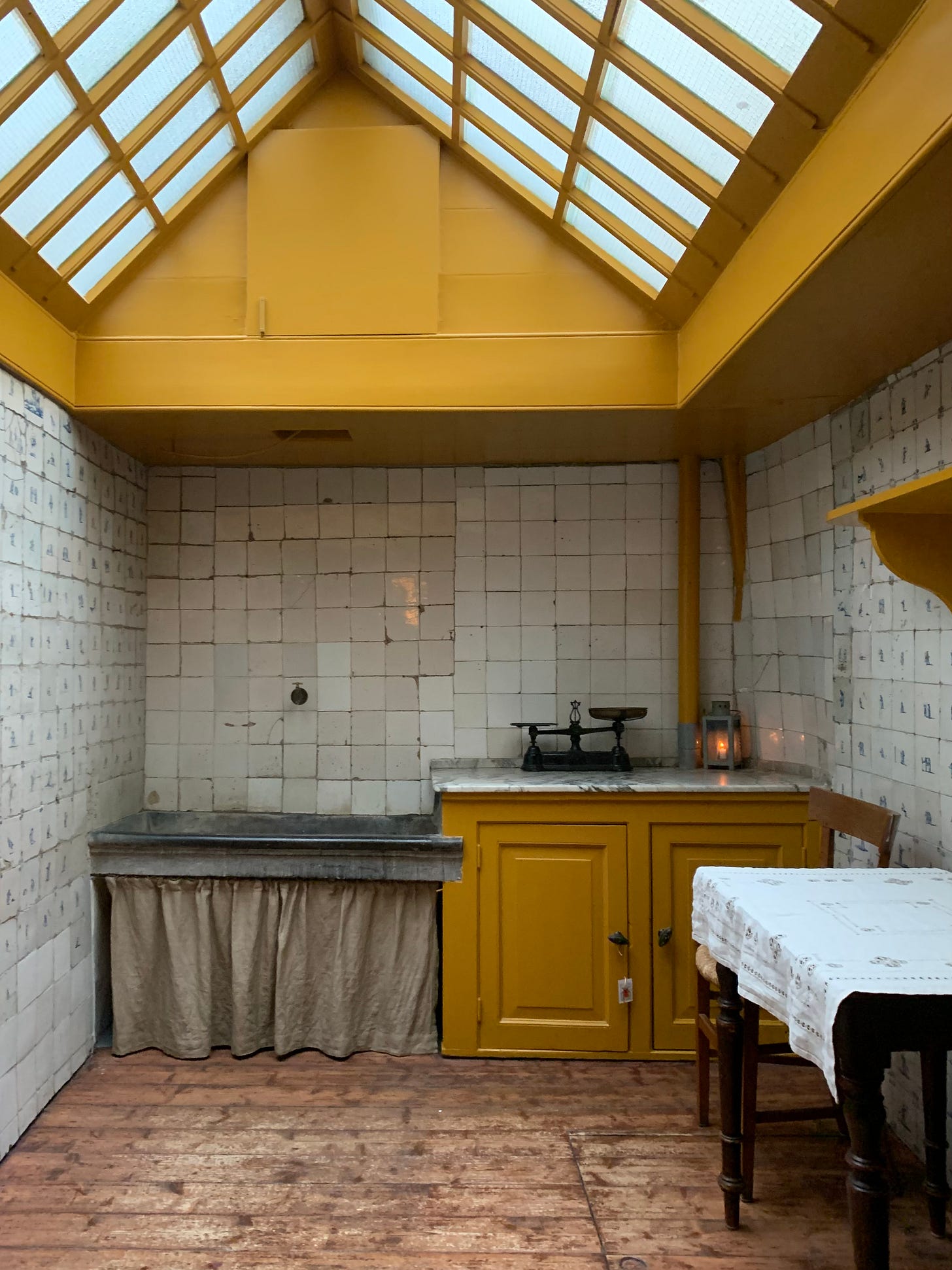






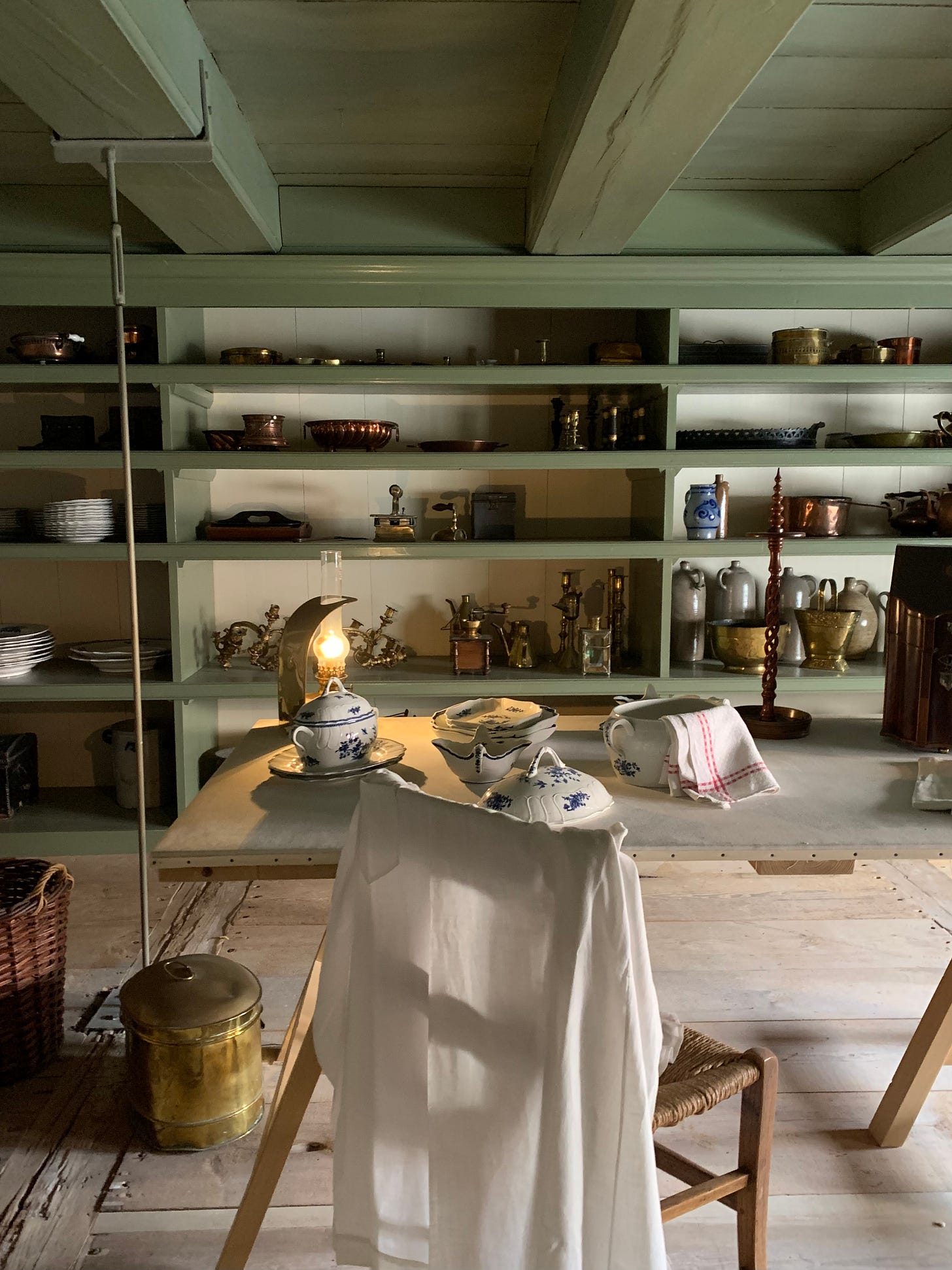
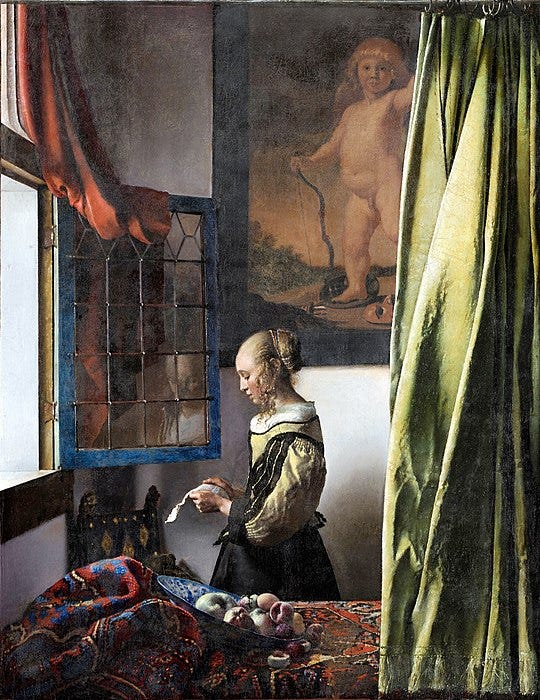
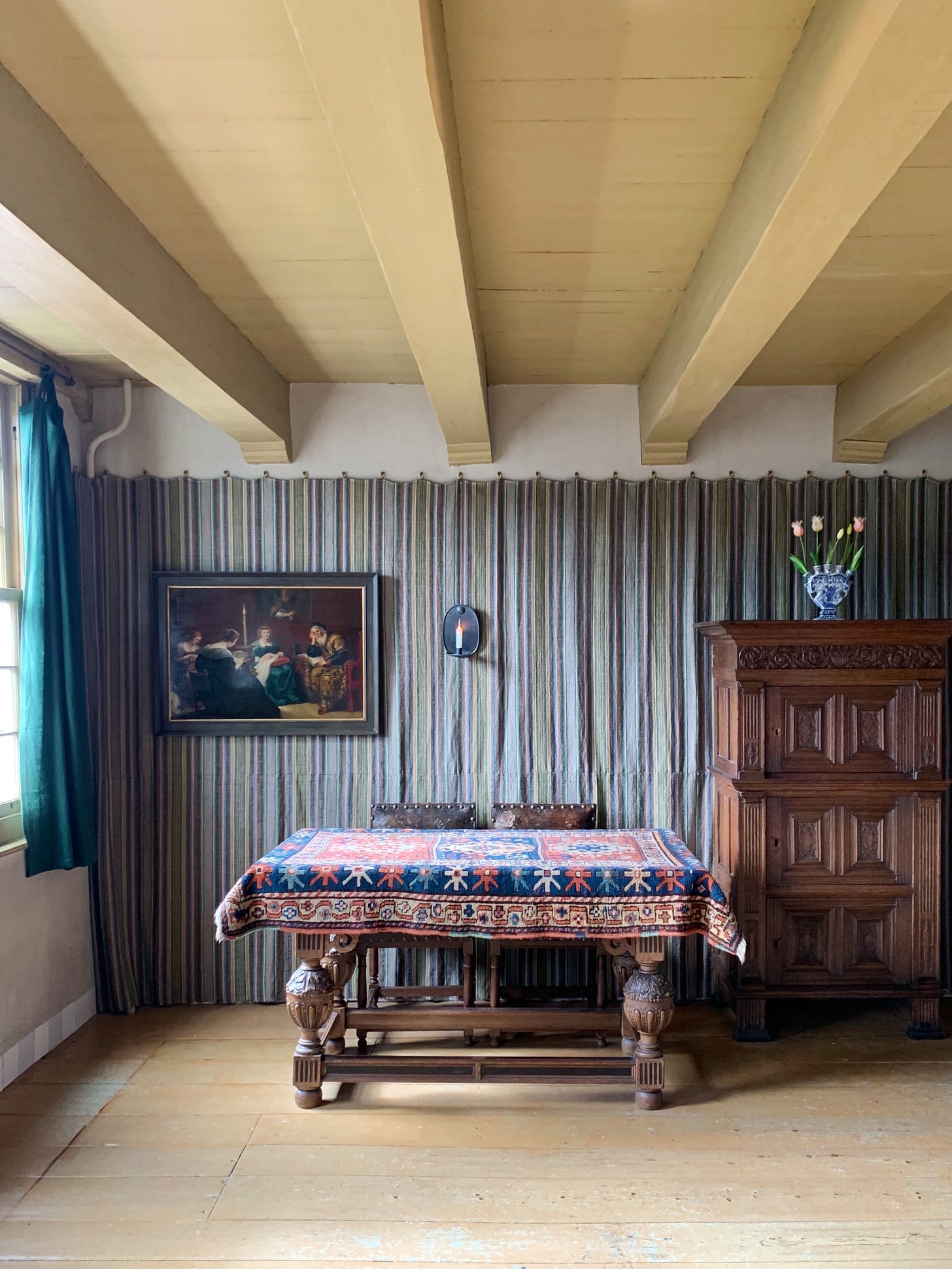
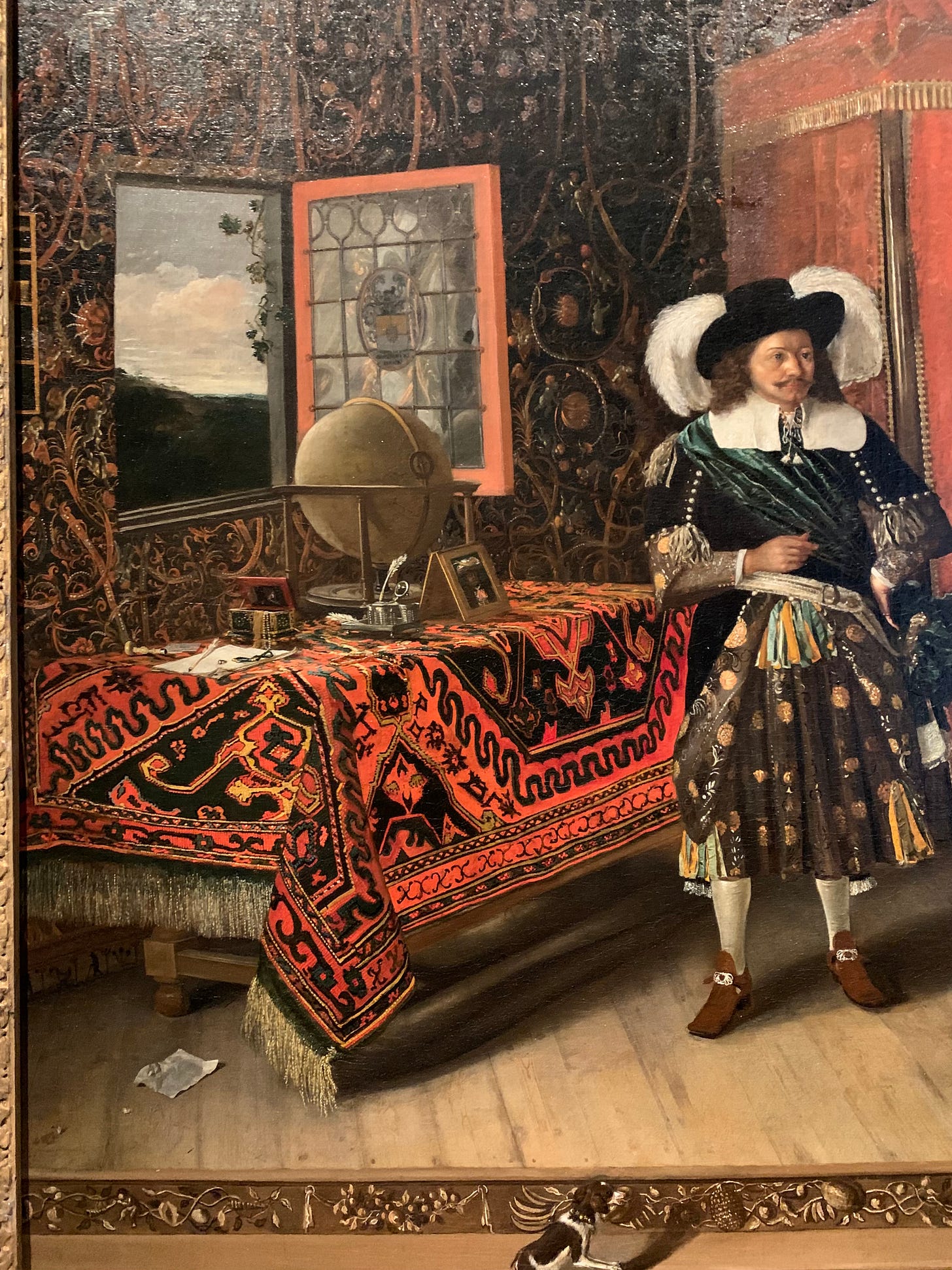
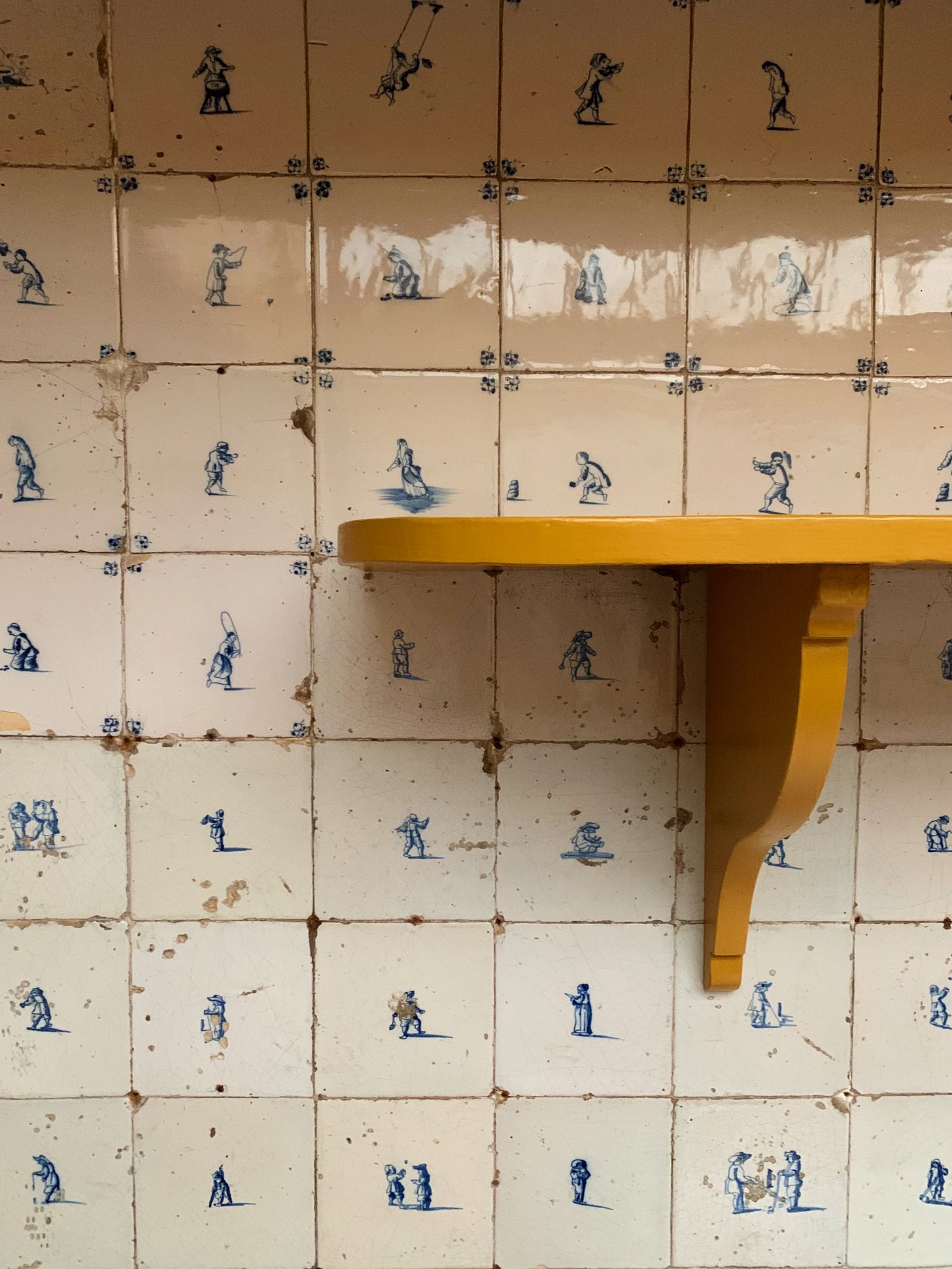
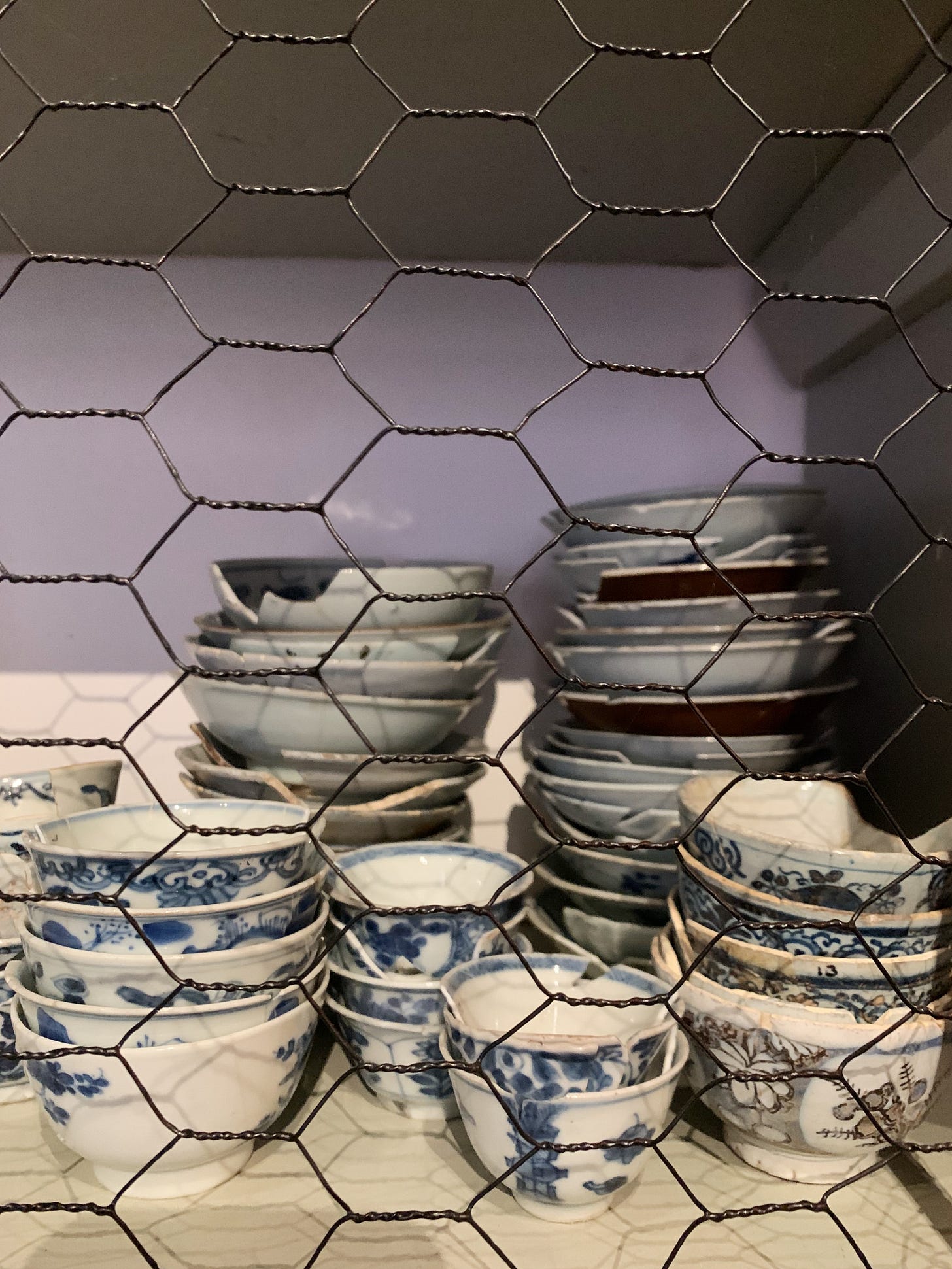
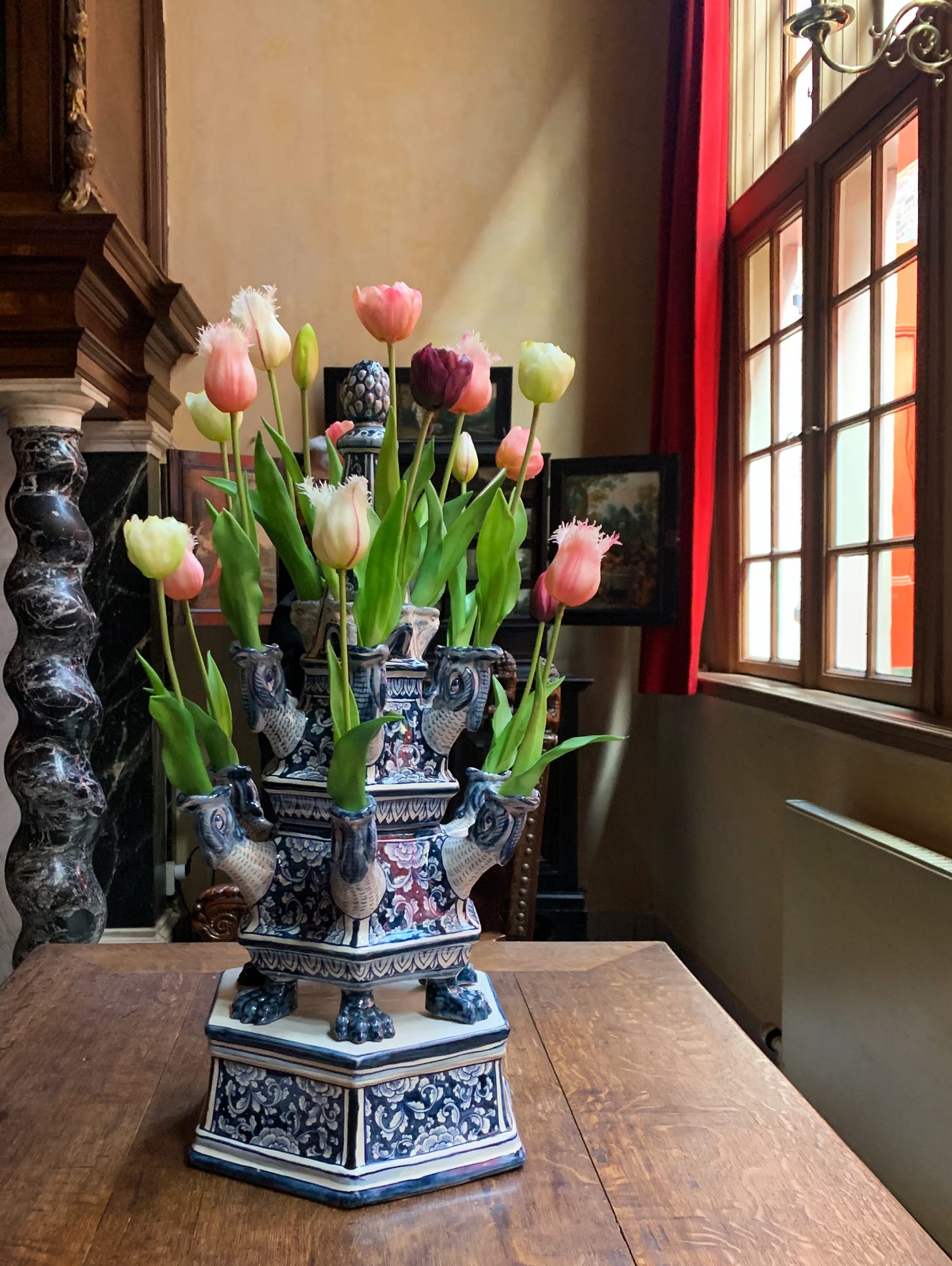


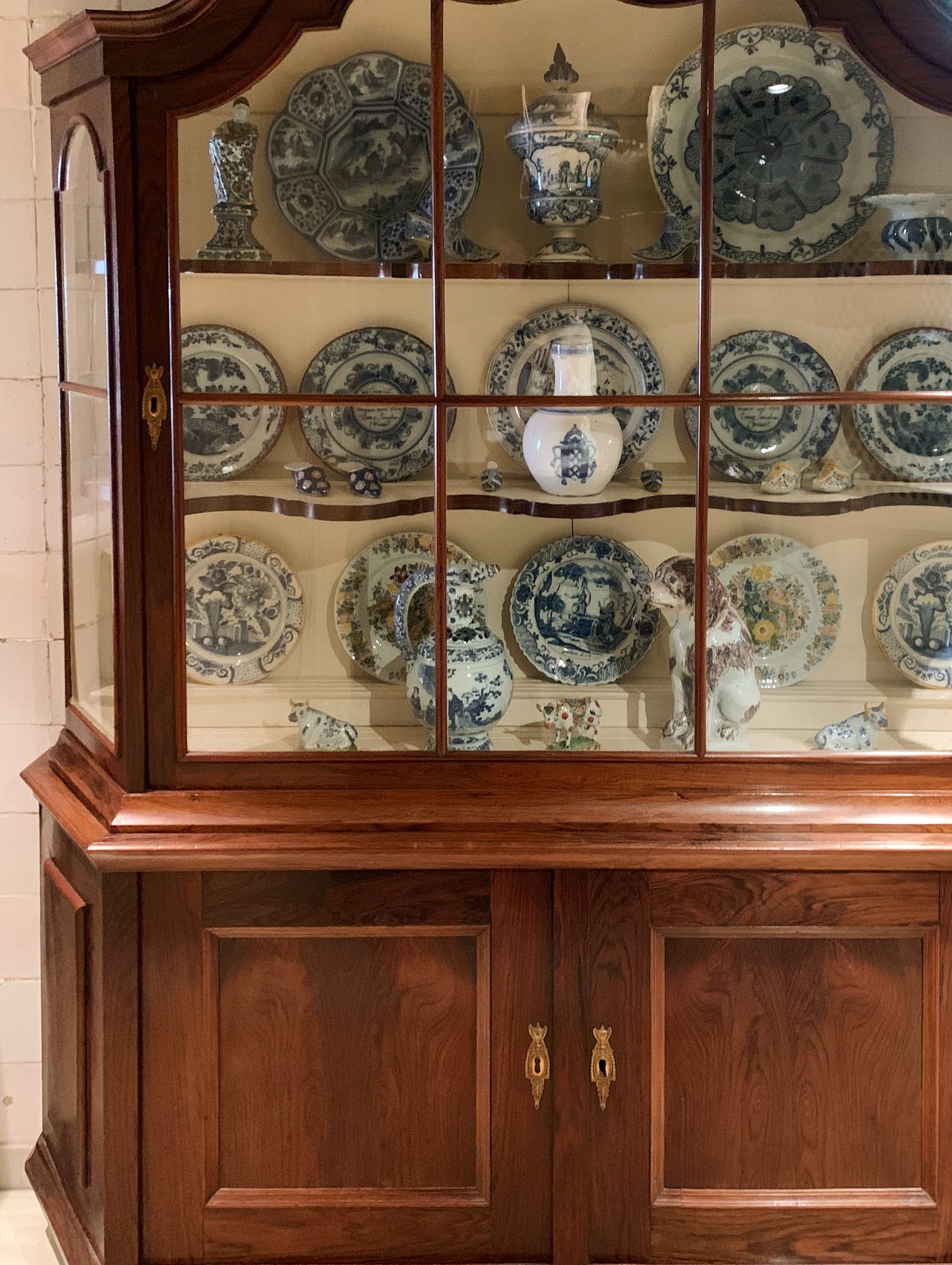
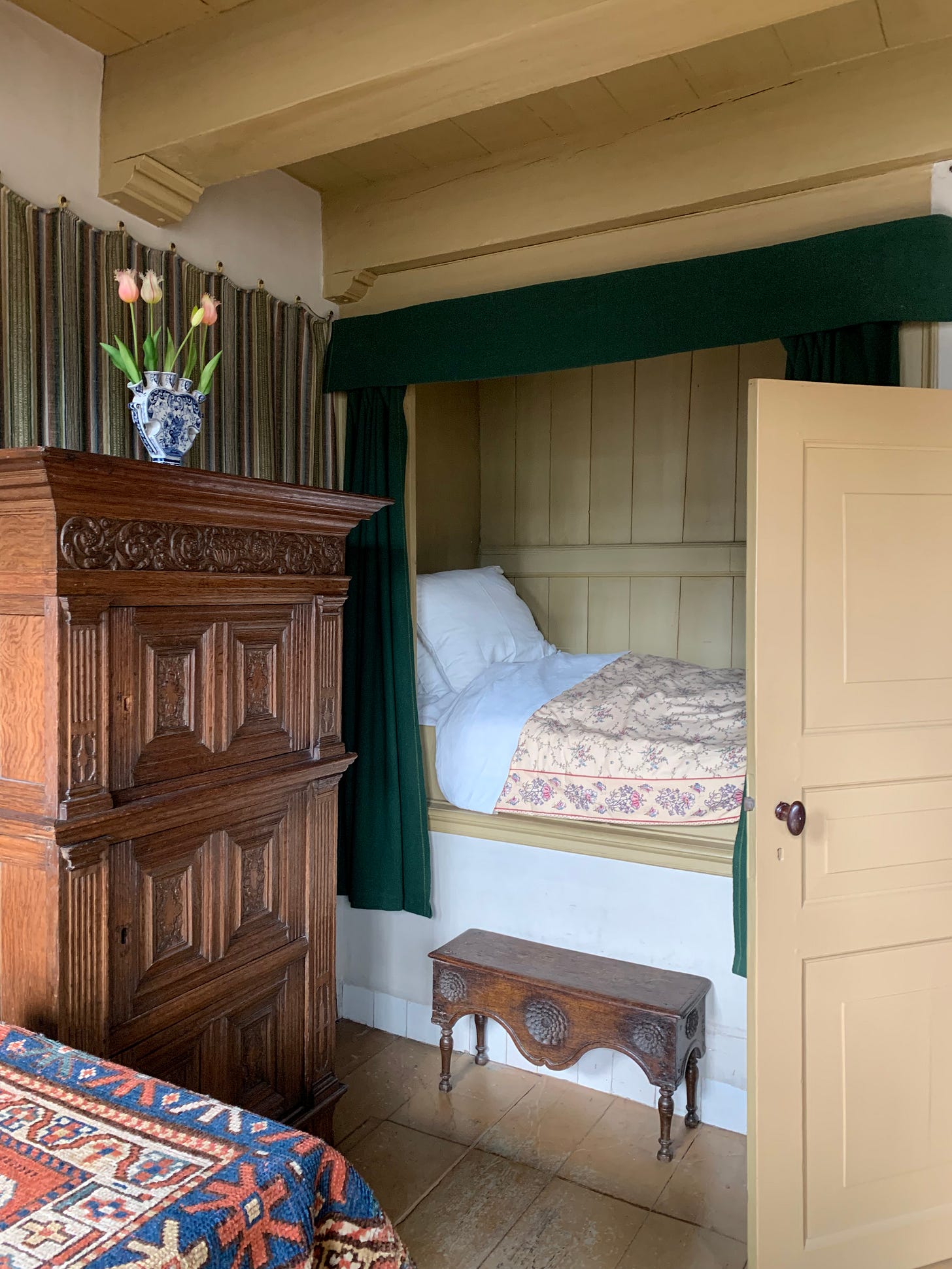
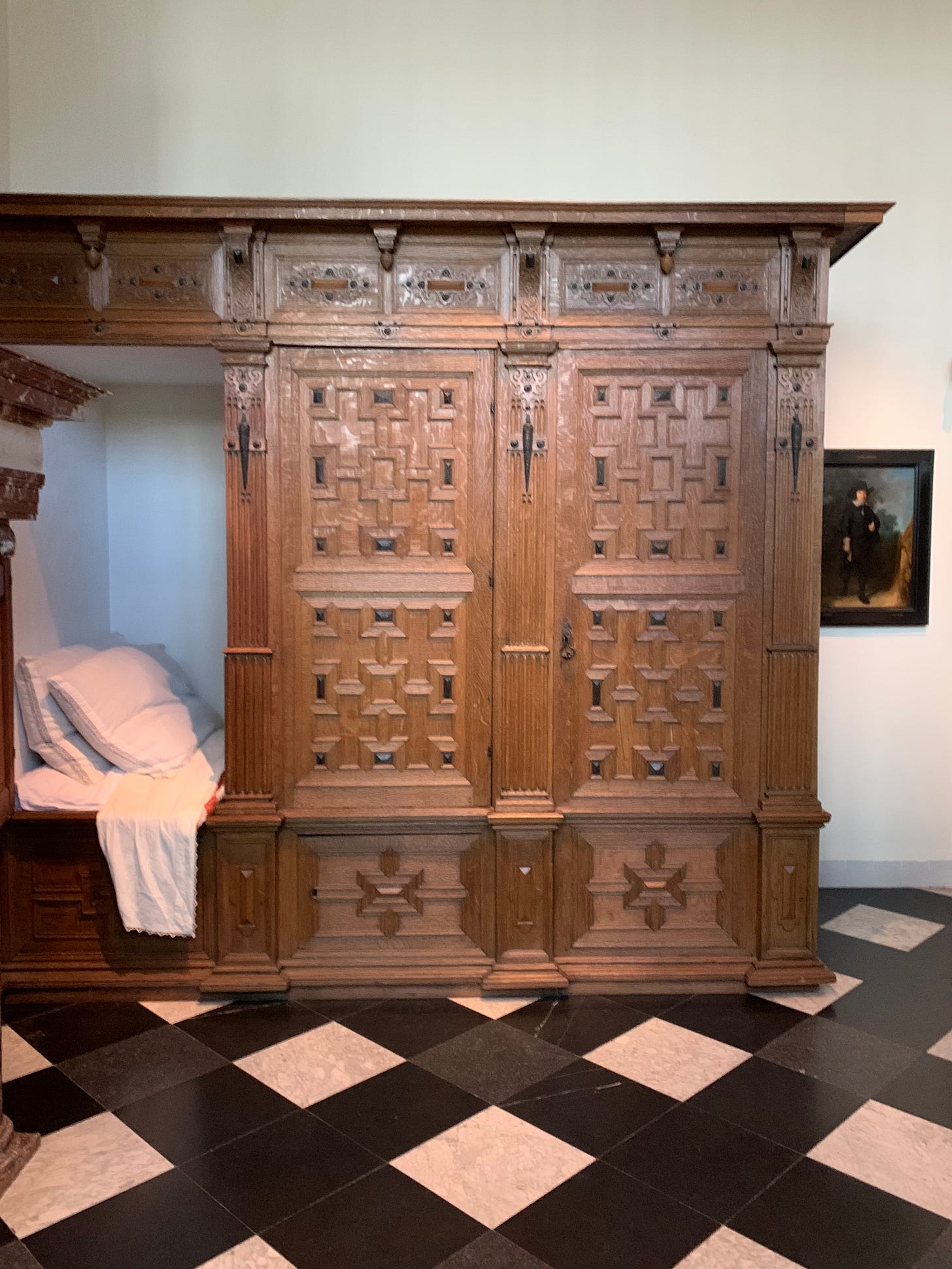

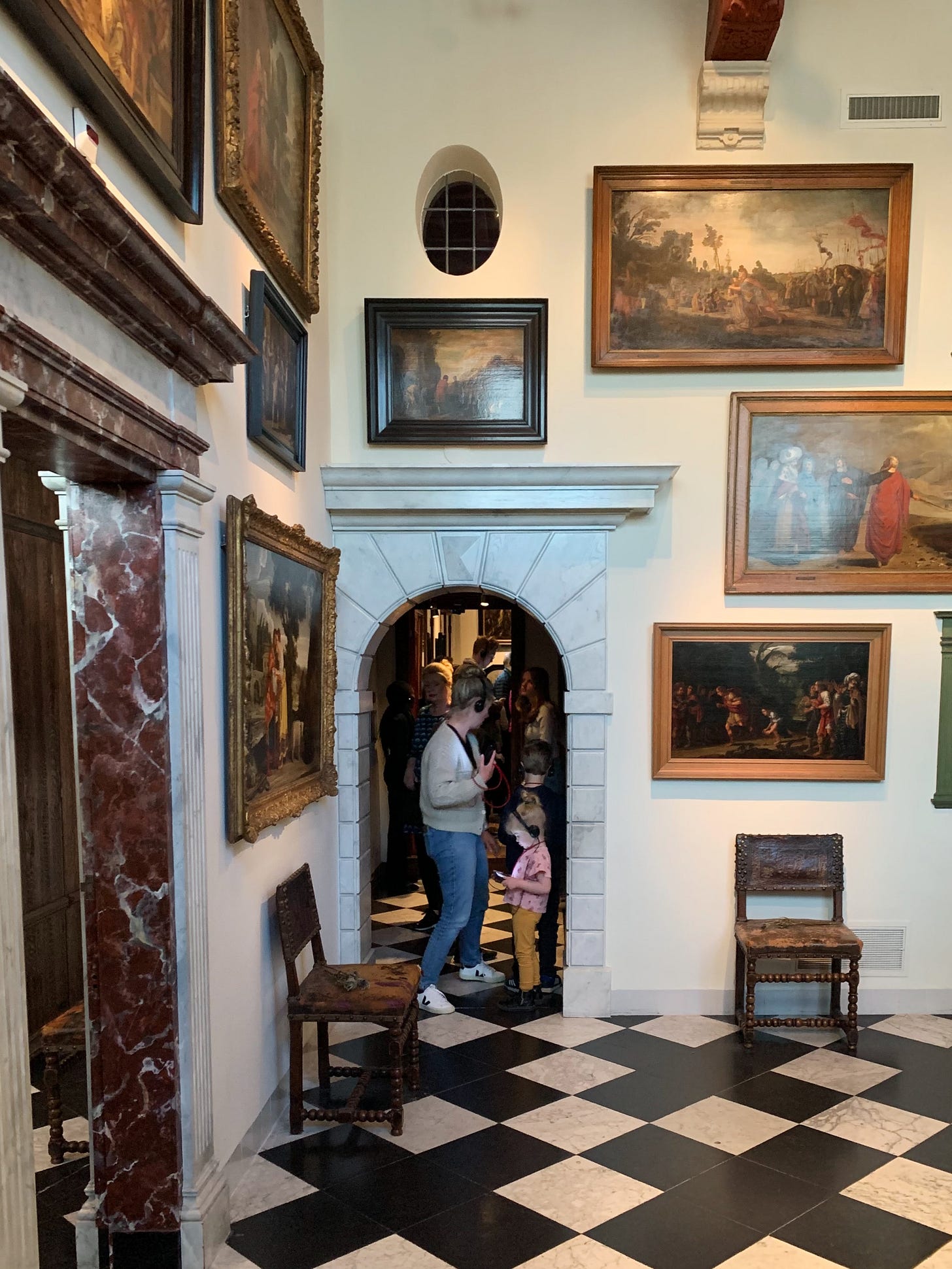


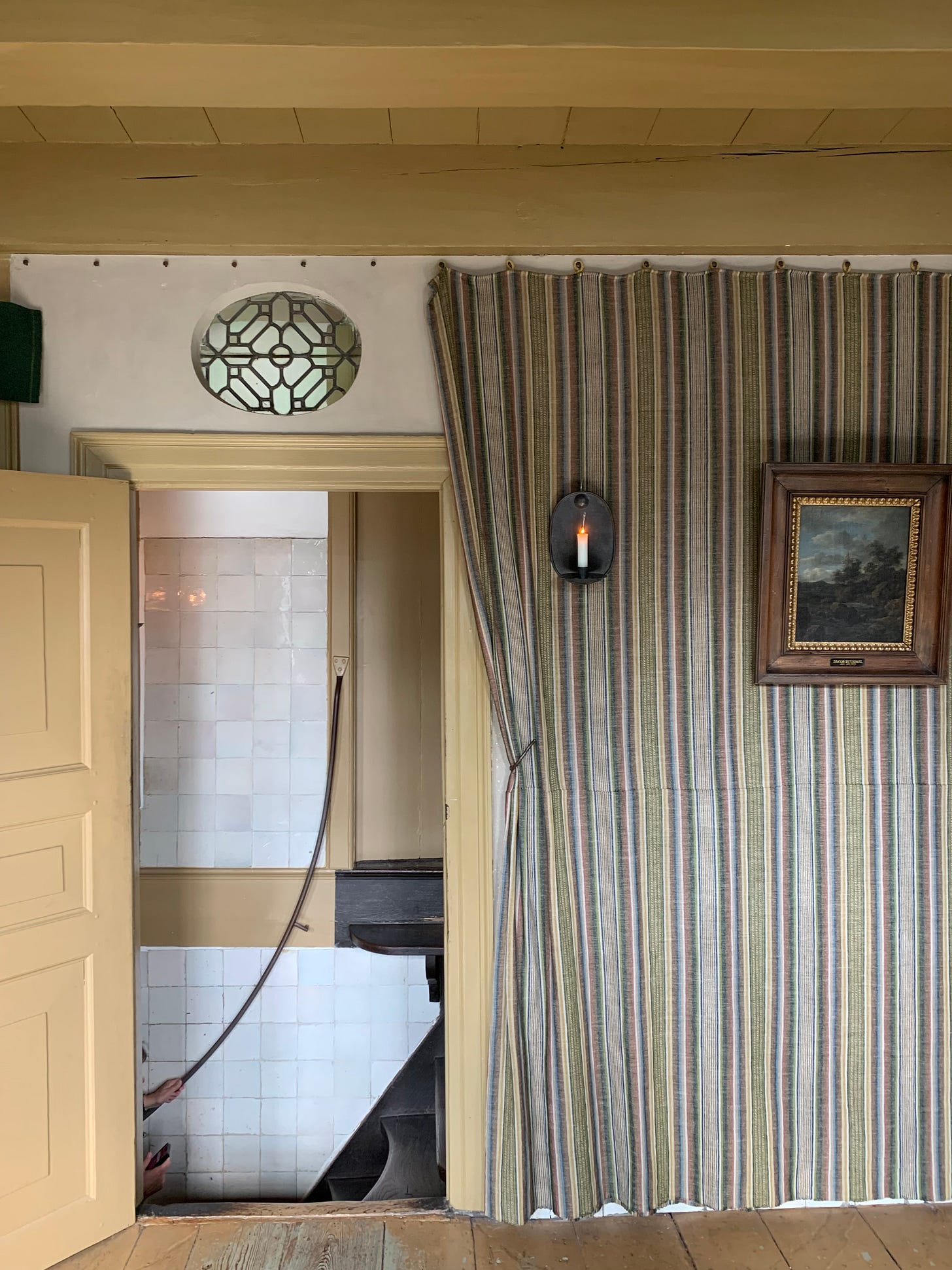
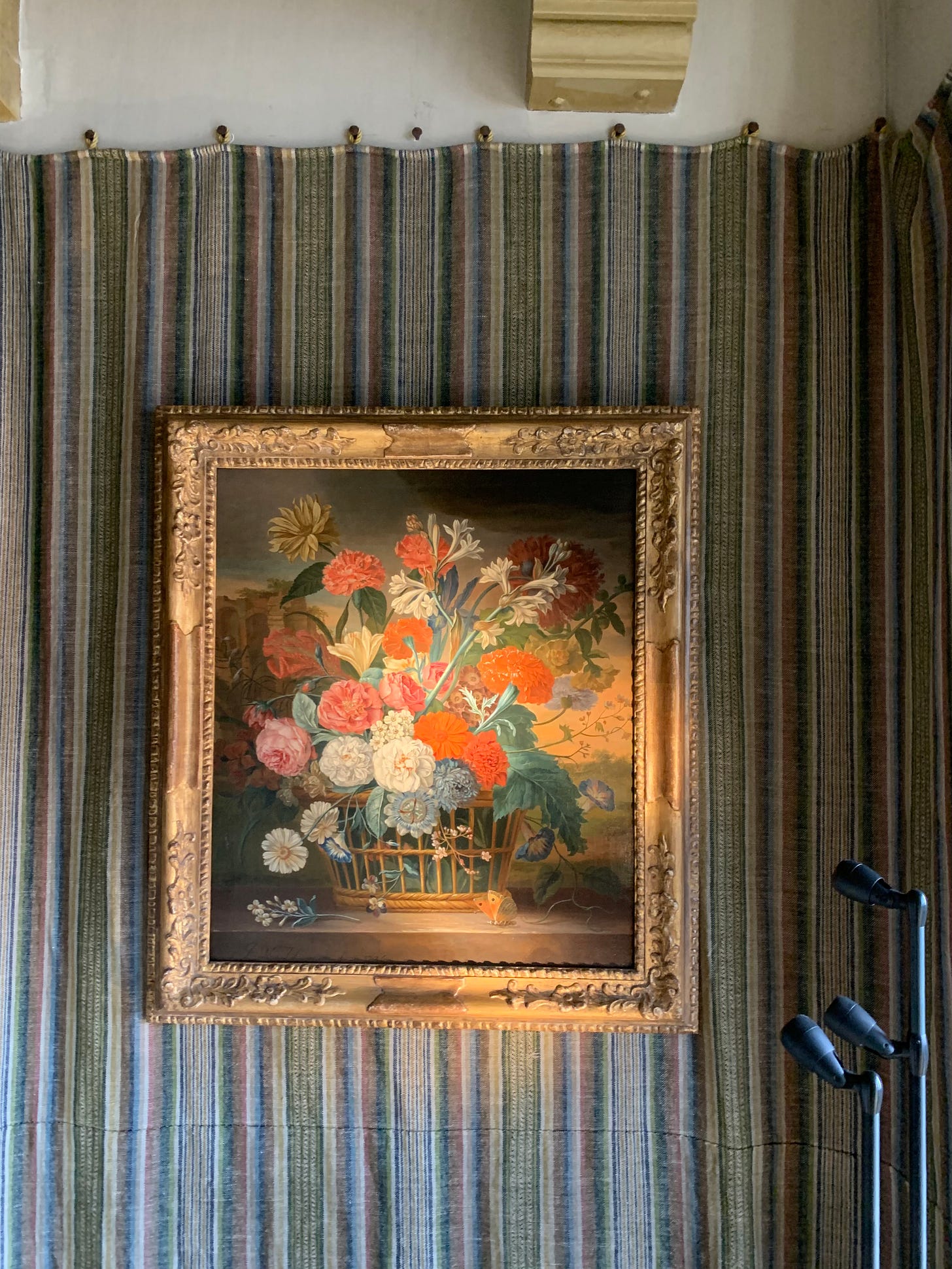
Thank you Constanca for taking us along with you on your visits to these most beautiful House Museums 🙏
Una visión muy interesante de algo, aparentemente, tan intocable. Es algo que me encanta de ti: haces muy próximas cosas de lo más variopintas, un bodegón del XVII tú nos haces ver que podemos poner en casa algo parecido y con tus impresiones del viaje a Amsterdam lo vuelves a hacer ❤️